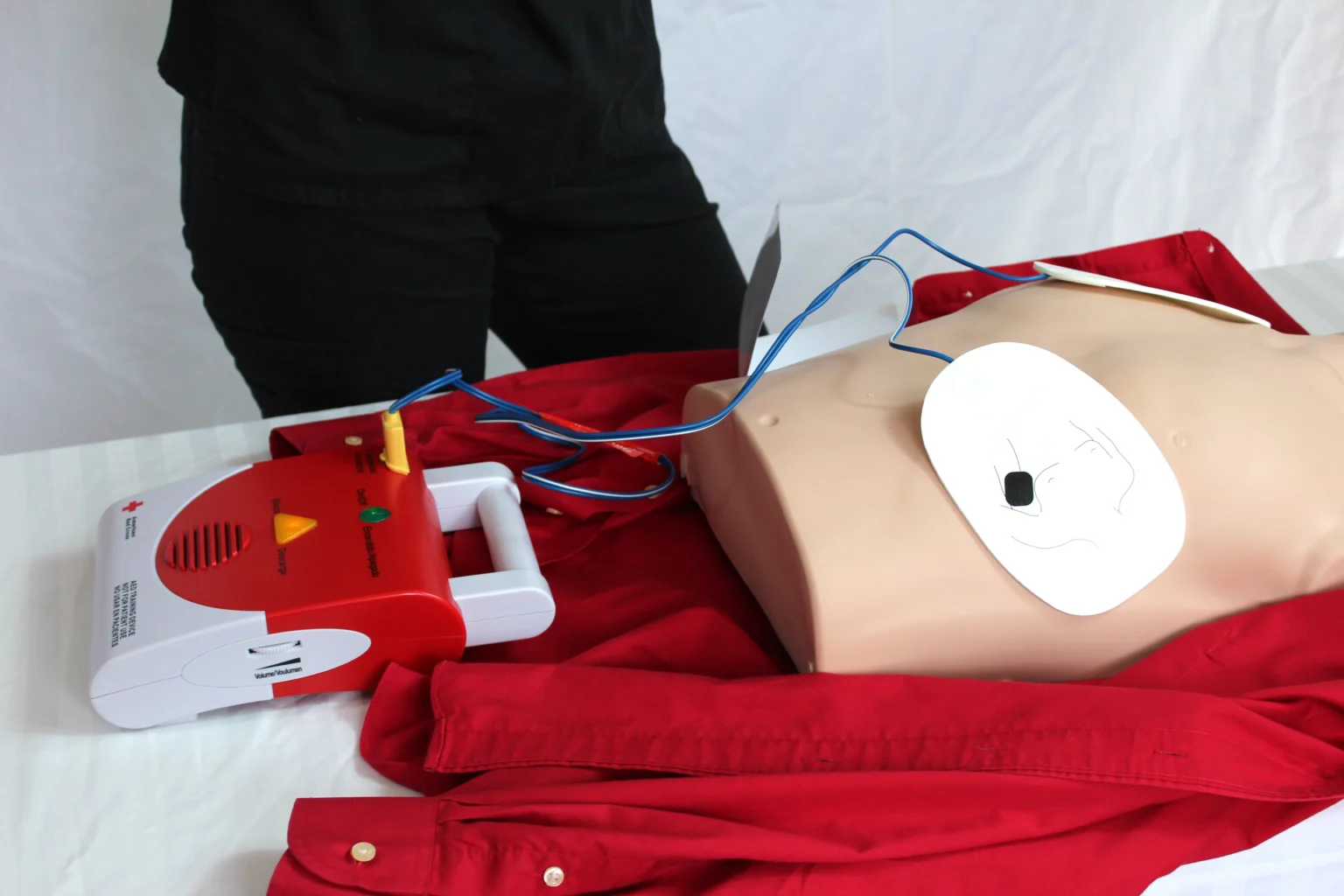Your cart is currently empty!
If you look around the public places you visit, you are likely to find an Automated External Defibrillator (AED). An AED is both sophisticated and easy to use, providing life-saving power in a user-friendly device which makes it useful for people who have never operated one and for anyone in stressful scenarios. However, the proper use of an AED is very important.
Ideally, while CPR is continued, turn on the AED, and then attach the pads to the upper right side and lower left side of the individual’s chest (Figure 11). Once the pads are attached correctly, the device will read the heart rhythm. If the pads are not attached appropriately, the device will indicate so with prompts. Once the rhythm is analyzed, the device will direct you to shock the individual if a shock is indicated.

A shock depolarizes all heart muscle cells at once, attempting to organize its electrical activity. In other words, the shock is intended to reset the heart’s abnormal electrical activity into a normal rhythm.
ASSURE OXYGEN IS NOT FLOWING ACROSS THE PATIENT’S CHEST WHEN DELIVERING SHOCK
DO NOT STOP CHEST COMPRESSIONS FOR MORE THAN 10 SECONDS WHEN ASSESSING THE RHYTHM
STAY CLEAR OF PATIENT WHEN DELIVERING SHOCK
ASSESS PULSE AFTER THE FIRST TWO MINUTES OF CPR
IF THE END-TIDAL CO2 IS LESS THAN 10 MMHG DURING CPR, CONSIDER ADDING A VASOPRESSOR AND IMPROVE CHEST COMPRESSIONS. HOWEVER, AFTER 20 MINUTES OF CPR FOR AN INTUBATED INDIVIDUAL, YOU MAY CONSIDER STOPPING RESUSCITATION ATTEMPTS.
Figure 12
You should use an AED if:
To use an AED, do the following:
If the AED is not working properly, continue CPR. Do not waste excessive time troubleshooting the AED. CPR always comes first, and AEDs are supplemental.
Do not use the AED in water.
AED is not contraindicated in individuals with implanted defibrillator/pacemaker; however, do not place pad directly over the device.